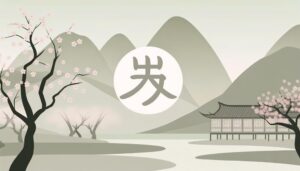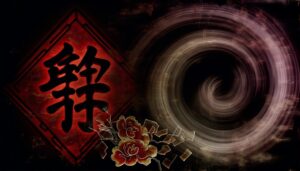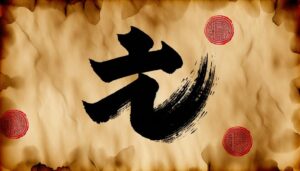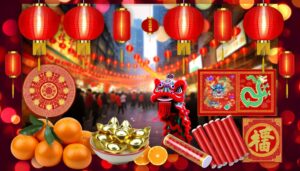What Does a Chinese Symbol Mean for Beginners?
Chinese symbols, deeply rooted in history and philosophy, serve as both linguistic tools and cultural repositories. They originate from the Shang dynasty, evolving in response to sociopolitical changes and intellectual currents.
Symbols are created using specific stroke orders and radical combinations, reflecting significant cultural values. Common symbols, such as '福' (fú) for good fortune and '寿' (shòu) for longevity, encapsulate ancient traditions.
Understanding Chinese characters involves grasping their historical evolution, from Oracle Bone Script to modern forms. By exploring these symbols, one gains valuable insights into the rich cultural heritage and philosophical depth of Chinese civilization.
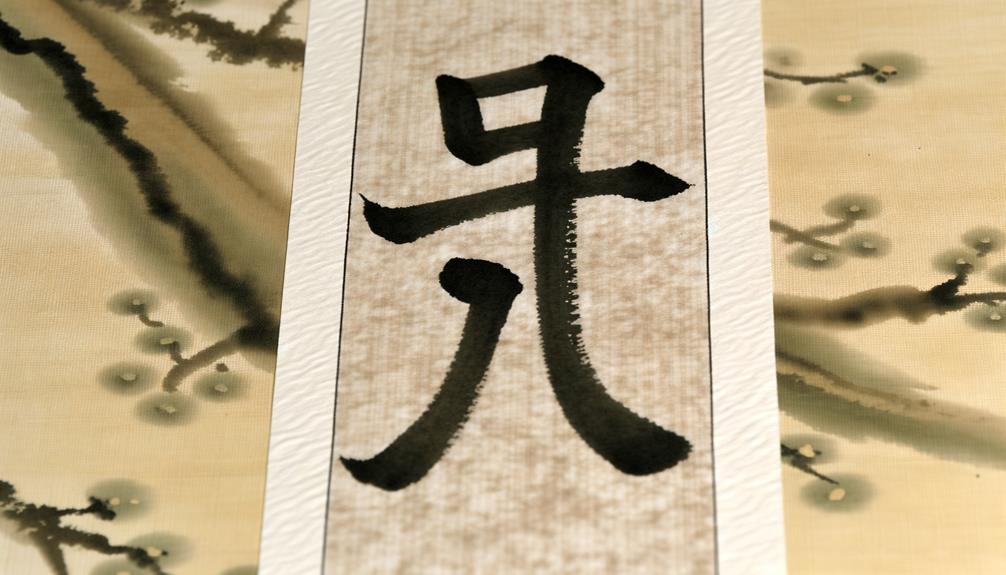
Key Takeaways
- Each Chinese symbol reflects historical, philosophical, and cultural meanings.
- Symbols are composed of radicals that provide semantic or phonetic clues.
- Understanding stroke order is essential for deciphering the symbol's meaning.
- The symbol's context within sentences or phrases can influence its interpretation.
- Familiarity with common symbols like 'fú' (fortune) or 'lóng' (dragon) aids in comprehension.
Historical Context
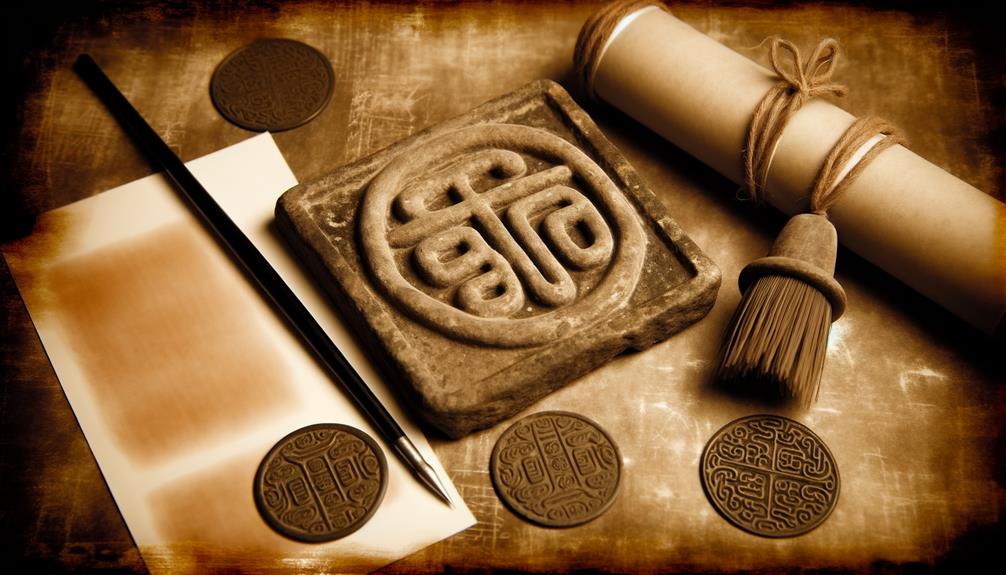
Rooted in millennia of cultural evolution, the meanings of Chinese symbols are deeply intertwined with the historical and philosophical developments of ancient China.
The origins of Chinese symbols can be traced back to the Shang dynasty (circa 1600-1046 BCE), where the earliest known forms of Chinese writing, oracle bones, were employed for divination. Over centuries, these symbols evolved, reflecting the sociopolitical shifts and intellectual currents of each era.
Confucianism, Daoism, and Buddhism profoundly influenced the symbolic lexicon, embedding layers of meaning that resonated with the populace. Chinese characters therefore serve not only as linguistic tools but also as repositories of cultural wisdom, embodying values such as harmony, prosperity, and longevity.
Understanding these symbols necessitates a grasp of their rich historical context.
Principles of Character Creation
The creation of Chinese characters is governed by specific principles that encompass stroke order, radical combinations, and cultural significance.
Understanding the correct stroke order is important for both legibility and the correct formation of characters.
Additionally, the integration of radicals, which are fundamental components, and the cultural context in which these characters are used, play vital roles in conveying nuanced meanings.
Stroke Order Importance
Understanding the intricate principles of stroke order in Chinese character creation is essential for achieving both aesthetic harmony and linguistic accuracy. Stroke order refers to the standardized sequence in which the strokes of a character are written. This practice not only guarantees that characters are crafted uniformly, but also facilitates efficient writing and readability.
The principles governing stroke order are rooted in centuries of calligraphic tradition, emphasizing strokes that proceed from top to bottom and left to right. Adhering to these conventions aids in the memorization and proper formation of characters, playing an important role in education and literacy. Additionally, stroke order affects the balance and symmetry of characters, underscoring its significance in maintaining the cultural and visual integrity of Chinese script.
Radical Combinations
Building upon the importance of stroke order, the principles of character creation further encompass the strategic use of radical combinations, which form the fundamental building blocks of Chinese characters. Radicals, which are simplified components or elements, are integral to the structure and meaning of each character.
There are 214 recognized radicals, each contributing semantic or phonetic value. For instance, the radical '氵' (water) appears in characters related to liquid or fluidity, such as '河' (river). Combining radicals into cohesive characters not only facilitates understanding but also aids in memorization and dictionary lookup.
Mastering radicals and their combinations is essential for linguistic competence, as it reveals the underlying logic and etymology embedded within the Chinese writing system.
Cultural Significance
Cultural significance profoundly shapes the principles of character creation in the Chinese language, reflecting historical, philosophical, and societal values embedded within each symbol. Chinese characters are not merely linguistic tools; they encapsulate the ethos and worldview of an ancient civilization.
The creation of characters adheres to principles that convey historical narratives. Many characters originate from pictograms and ideograms that depict ancient stories and traditions.
Additionally, symbols often embody Confucian, Taoist, and Buddhist philosophies. Characters mirror societal hierarchies, relationships, and communal values, reflecting societal norms.
Moreover, the visual harmony and balance in character strokes reflect broader aesthetic principles, adding an artistic dimension to the language.
Understanding these principles provides deeper insight into the language's rich cultural tapestry, extending beyond mere translation to embodying Chinese heritage.
Evolution Through Dynasties

The evolution of Chinese symbols through various dynasties reveals a complex interplay between historical context and cultural adaptation. By examining their ancient origins, we can trace how symbolic meanings have shifted in response to socio-political changes, culminating in modern interpretations that reflect contemporary values.
This analysis not only illuminates the dynamic nature of Chinese semiotics but also underscores the resilience of traditional motifs in a rapidly evolving cultural landscape.
Ancient Origins Analysis
Tracing the evolution of Chinese symbols through various dynasties reveals profound insights into the cultural and historical transformations that shaped their meanings. From the Shang Dynasty's oracle bones to the intricate calligraphy of the Tang and Song Dynasties, the development of Chinese symbols is a demonstration of the civilization's adaptability and continuity.
Notable stages in this evolution include:
- Shang Dynasty (c. 1600–1046 BCE): Use of oracle bones for divination.
- Han Dynasty (206 BCE–220 CE): Standardization of written characters.
- Tang Dynasty (618–907 CE): Flourishing of calligraphic styles.
- Qing Dynasty (1644–1912 CE): Codification of modern script.
These periods highlight the dynamic and complex history behind Chinese symbols, each contributing to their enduring legacy.
Symbolic Cultural Shifts
Examining the symbolic cultural shifts across various Chinese dynasties reveals a nuanced tapestry of evolving meanings and societal values embodied in the written characters. Each dynasty contributed distinct elements, reflecting changes in philosophy, governance, and social norms. For instance, the Han Dynasty emphasized Confucian ideals, which were mirrored in characters denoting filial piety and hierarchy. In contrast, the Tang Dynasty's flourishing arts influenced characters symbolizing beauty and poetry.
| Dynasty | Key Symbolic Focus |
|---|---|
| Han Dynasty | Filial Piety, Hierarchy |
| Tang Dynasty | Beauty, Poetry |
| Song Dynasty | Scholarly Pursuits |
The Song Dynasty, known for its intellectual rigor, emphasized characters representing scholarly pursuits and moral integrity. This evolution underscores how Chinese symbols are not static, but dynamic reflections of the cultural zeitgeist through the ages.
Modern Interpretations Insight
Modern interpretations of Chinese symbols reveal a profound interplay between ancient cultural heritage and contemporary societal values. These symbols, while rooted in millennia-old traditions, have evolved through various dynasties, adapting to the changing ethos of each era.
The transformation is evident in how modern China recontextualizes these symbols to reflect current ideologies.
- Han Dynasty: Symbolism emphasized Confucian values and social harmony.
- Tang Dynasty: Flourished with artistic and poetic expressions, enriching symbolic meanings.
- Ming Dynasty: Focused on stability and imperial authority, altering symbolic representations accordingly.
- Contemporary Era: Blends historical significance with modern aspirations such as innovation and global influence.
This dynamic evolution underscores the resilience and adaptability of Chinese symbols, ensuring their relevance in both historical and modern contexts.
Common Symbols and Meanings
Many Chinese symbols carry profound meanings rooted in ancient philosophical and cultural traditions, each representing a unique aspect of life and belief.
For instance, the symbol '福' (fú) signifies good fortune and happiness, often used in celebrations such as the Lunar New Year.
The character '寿' (shòu) denotes longevity, commonly seen in birthday greetings for elders.
Another essential symbol, '和' (hé), embodies harmony and peace, central to Confucian thought.
The dragon, or '龙' (lóng), symbolizes power and strength, often associated with imperial authority.
Each of these symbols encapsulates centuries of wisdom and cultural values, reflecting the importance of virtues such as prosperity, longevity, and harmony in Chinese society.
Cultural Significance
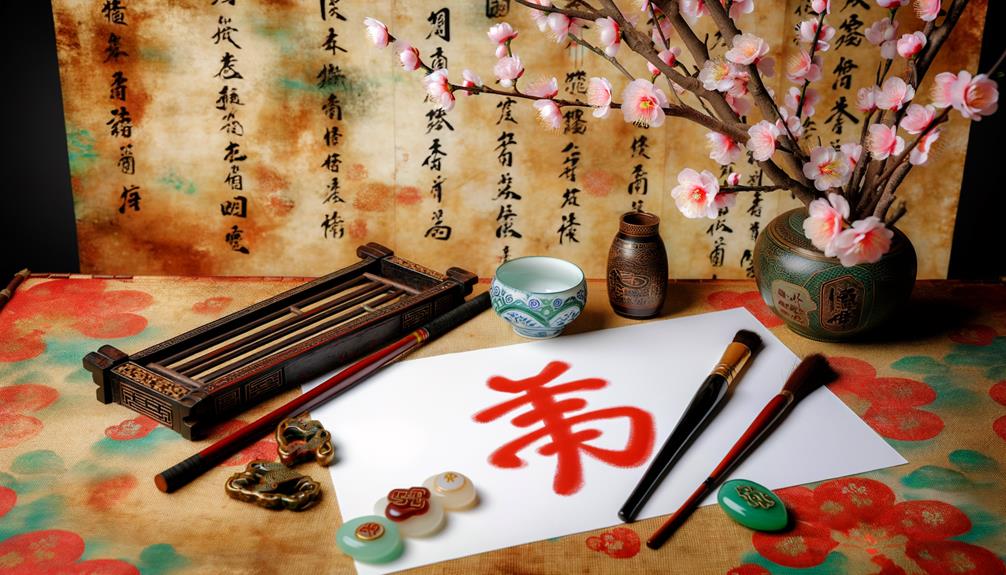
The cultural significance of Chinese symbols extends beyond their literal meanings, serving as integral components of rituals, art, and daily life that encapsulate the nation's rich heritage and philosophical ethos.
These symbols are deeply embedded in various aspects of Chinese culture, reflecting values and beliefs that have been passed down through generations.
They are often used to:
- Convey auspicious messages and blessings, such as health, wealth, and longevity.
- Represent key philosophical concepts from Confucianism, Taoism, and Buddhism.
- Enhance aesthetic elements in traditional Chinese painting, calligraphy, and architecture.
- Play pivotal roles in festivals, ceremonies, and traditional practices.
Understanding these symbols provides invaluable insight into Chinese civilization and its enduring legacy.
Learning Chinese Characters
Mastering Chinese characters involves understanding their unique structure, historical evolution, and the principles that govern their formation.
Chinese characters, or Hanzi, can be categorized into simple pictographs, ideographs, and complex phono-semantic compounds.
Each character's components often provide clues to its pronunciation and meaning, derived from ancient pictorial representations and logical constructs.
The evolution from Oracle Bone Script to the modern Simplified characters reflects historical and cultural shifts.
Modern learners must adopt systematic approaches, such as radicals-based learning, to efficiently decode and memorize characters.
Appreciating the etymological layers and cultural context enhances comprehension, making the learning process both intellectually stimulating and culturally enriching.
This intricate system underscores the depth and beauty of the Chinese language.
Conclusion
In sum, the complex tapestry of Chinese symbols, rooted in rich historical context and evolving through dynasties, not only embodies profound cultural significance but also reflects the enduring principles of character creation.
The common symbols, laden with meaning, serve as a proof to the linguistic artistry that has flourished over millennia.
As one explores the study of these characters, the gateway to understanding a civilization's soul and intellect reveals itself, inviting endless exploration and admiration.


